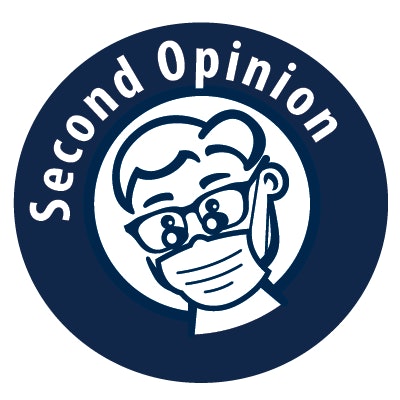
The overuse of prescription opioids and opiates has become a national crisis. In 2017, there were 2,196 opioid-related overdose deaths in California, according to the state's Department of Public Health.
 Solomon Poyourow, DDS, MD, MPH
Solomon Poyourow, DDS, MD, MPHWhat's more, in 2014, hydrocodone was changed from a schedule III to a schedule II drug, and we lost the privilege to prescribe opioid analgesics, such as hydrocodone (Vicodin and Norco), with refills. Not long after, we started to see best practices for acute pain management emerge that do not rely on opiates and laws seeking to restrict prescribing and require better tracking of opioid prescribing and dispensing. Given these trends, now is a good time for all healthcare professionals to rethink pain management.
Dentists do a good job managing acute, short-term pain, and they are not the primary prescribers of opioid analgesics for adults. However, we perform many dental surgeries that result in a lot of opioid prescriptions, and we prescribe the majority of opioid analgesics for children ages 11 to 18. Let's take a closer look at acute pain management and why it's time to change our behavior.
Managing postoperative pain
There are various approaches to managing acute pain from dental treatment. I have tried several approaches myself over the years and have my own algorithm for these types of decisions.
However, as the number of people experiencing substance use disorders has skyrocketed and there is intense focus on contributing factors, it is more important than ever to look to experts in the field and follow best practices.
Gone are the days when I could decide these things without considering the bigger picture. With that as background, here is the stepwise recommendation for acute pain management published in the ADA Practical Guide to Substance Use Disorders and Safe Prescribing (May 8, 2015):
- Mild pain: Ibuprofen 200 to 400 mg every four to six hours as needed for pain
- Mild-to-moderate pain: Ibuprofen 400 to 600 mg every six hours on a fixed interval for 24 hours, then ibuprofen 400 every four to six hours as needed for pain
- Moderate-to-severe pain: Ibuprofen 400 to 600 mg plus acetaminophen 500 mg every six hours on a fixed interval for 24 hours, then ibuprofen 400 mg plus acetaminophen 500 mg every six hours as needed
- Severe pain: Ibuprofen 400 to 600 mg plus acetaminophen 650 mg and hydrocodone 10 mg every six hours on a fixed interval for 24 to 48 hours, then ibuprofen 400 to 600 mg plus acetaminophen 500 mg every six hours as needed
I also remind patients to avoid acetaminophen in other medications and that the maximum dose for acetaminophen is 3,000 mg per day.
To avoid potential acetaminophen toxicity, dentists should consider prescribing a rescue medication containing ibuprofen (Vicoprofen) if patients experience breakthrough pain. The maximum dose of ibuprofen is 2,400 mg per day. Higher maximal daily doses have been reported for osteoarthritis when prescribed under the direction of a physician.
Future revisions of the guidelines may take into account a finding that was reported in a recent overview of systemic reviews in the Journal of the American Dental Association (April 2018, Vol. 149:4, pp. 256-265). The authors concluded the following:
When comparing the efficacy of nonsteroidal anti-inflammatory medications with opioids in relation to the magnitude of pain relief, the combination of 400 mg of ibuprofen plus 1,000 mg of acetaminophen was found to be superior to any opioid-containing medication or medication combination studied.
Controlled substances regulation
To assist healthcare practitioners in their efforts to ensure appropriate prescribing, ordering, administering, furnishing, and dispensing of controlled substances, the California Department of Justice established the Controlled Substance Utilization Review and Evaluation System (CURES). If used consistently by controlled-substance prescribers and dispensers, the system is an excellent tool for regulatory and law enforcement agencies to reduce the diversion and resultant abuse of schedule II, III, and IV controlled substances and for statistical analysis, education, and research.
This system makes it possible for controlled-substance prescribers, those who possess an active Drug Enforcement Administration (DEA) license, and a California healthcare provider license to review the database prior to prescribing medications with the potential for abuse. Under state law, all California-licensed prescribers authorized to prescribe controlled substances were required to register to access CURES 2.0 by July 1, 2016. The law requires mandatory use as of October 2, 2018. Once a provider is registered in the system, the program requires passwords to be changed every 90 days. The system can be utilized in about two minutes.
Hopefully, this state-mandated program will help prescribers see the true drug history of their patients and alert dispensers before dispensing controlled substances to patients who are seeking them for illegitimate purposes.
Substance use disorders and first exposure
Substance use disorders are not well-understood and are often viewed as a moral problem or just a lack of self-control. However, as brain research into these disorders advances, we continue to learn more about the substance-use continuum and the contributing biological, physiological, and psychological factors.
The substance-use disorder we know as "addiction" is a concern with the prescription of opiates and opioids and likely the cause of various drug-seeking behaviors we see in the dental office, including exaggeration of pain severity, running out of medication early, or frequent dental visits that are apparently unnecessary.
According to the ADA guide, "Addiction is a primary chronic disease of brain reward, motivation, memory, judgment and related circuitry ... characterized by the inability to consistently abstain, impairment in behavioral control, craving, diminished recognition of significant problems in behavior and interpersonal relationship, and a dysfunctional emotional response."
Of particular concern to me as an oral surgeon is research showing an association between exposure to drugs and alcohol early in life with a substance-use disorder in later life. Sometimes, even a small amount of a substance results in subsequent drug-seeking activity.
Given the current evidence, I prefer a non-narcotic prescription for postsurgical pain in children and young adults. I spend a bit more time on my postoperative discussion reassuring parents and patients that their pain will be effectively controlled without narcotics. Most parents welcome the approach and understand that I have their child's best interests at heart at all stages of treatment, during surgery, and afterward.
I encourage other dentists to contemplate their routine prescribing practices, read the available evidence, and try a different approach if they tend to prescribe a narcotic to most patients. As each patient is different and requires tailored medical and dental treatment, the same can be said of postoperative pain management.
Solomon Poyourow, DDS, MD, MPH, is a board-certified oral and maxillofacial surgeon who practice in Los Alamitos, CA.
This Second Opinion was first published in September 2018 in the California Dental Association's Update publication. DrBicuspid.com appreciates CDA's permission to reprint. The column has been edited for accuracy and length.
The comments and observations expressed herein do not necessarily reflect the opinions of DrBicuspid.com, nor should they be construed as an endorsement or admonishment of any particular idea, vendor, or organization.


















